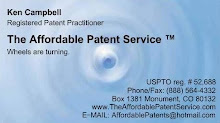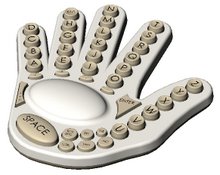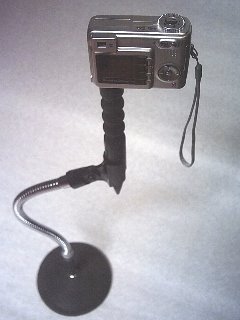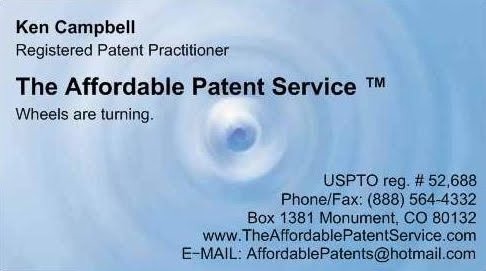As far as the United States Patent and Trademark Office (USPTO) is concerned, you may publicize an original invention for up to a full year, before filing for a patent. This is known as the “first-to-invent” method of determining ownership for patent rights. You don’t need to be the first one to file for a patent on an invention in the U.S. to be the one who eventually receives that patent. While it is almost never a good idea to wait on establishing some type of protection for your invention, the USPTO gives you the benefit of more options.
Most other countries use what is called the “first-to-file” method, which grants intellectual property (IP) rights to the first one who files a patent application for a particular invention. Although the American method can make things very confusing, it does a fairly good job of ensuring rightful ownership of original inventions. This means, in general terms, that there is no real requirement for secrecy, within the year prior to filing for a patent in the United States of America.
You may wonder why people would want to publicize their inventions before they acquire legal protection for them. It seems counter-intuitive. Well, when you publicize something new (assuming that you disclose enough information to make it obvious to other people), it becomes legitimate proof, for all to see, that you were in possession of that knowledge before anyone else. In fact, publicizing an idea can be far more powerful than keeping it secret.
Why? Because, you effectively eliminate the possibility that someone else will profit from it. Your publication serves as a barrier against U.S. patent protection for anyone but you, the inventor. In simple terms, once an idea becomes public knowledge, the only one who can be publicly protected with it, in the United States, is the true inventor (and his/her assignees or licensees).
So, technically, you can develop an idea, in full view of the public, for one year before filing for a U.S. patent. You may actually seek the assistance of scientists, engineers, and other inventors to add more merit to your own invention.* Afterward, you may be able to legally claim a better invention as a result of the work on your original idea. This is one of the advantages provided by the USPTO that is certainly worth considering.
Many people would be leery of throwing normal caution to the wind like this. But, let’s face it, every inventor must eventually reach the point where s/he is ready to publicize his/her invention, anyway. For an inventor, using this reality to an advantage, in a timely manner, could mean the difference between losing an invention forever and keeping it for good. The USPTO is only there to help.
* Contact the APS before attempting this on your own.
Wednesday, February 28, 2007
Wednesday, February 14, 2007
PTO Abandons Document Disclosure Program
As of February 1st 2007, the United States Patent and Trademark Office (USPTO) will no longer accept submissions under its Document Disclosure Program. This is a program that once allowed information on an invention to be stored on file with the U.S. Patent Office. Disclosures were kept up to two years for a fee of $10, at the request of the inventor. Submissions that were filed before February 1st 2007 will be kept on file at the USPTO for the full two-year period, however, regardless of when they were filed.
Many people were already aware that this was a powerful tool for independent inventors, as well as seasoned professionals. I understand that the U.S. Postal Service saw a much larger-than-normal volume of mail to the USPTO in the days leading up to the cutoff date. I personally submitted four disclosures during that time.
The Document Disclosure Program (DDP) had always been intended to serve as a preliminary step toward an eventual patent. It was never intended to provide any protection on its own. The DDP may have been given notoriety by companies who would use it unscrupulously. Many uninformed inventors have undoubtedly been duped into relying on the DDP, and consequently funneled into a vulnerable position with their intellectual property.
As it stands now, the U.S. Provisional Patent Application is the most accessible form of protection through the USPTO. The filing fee for a provisional is currently $100. This is a bit more than the old fee for the DDP. And, a provisional application requires much more detail than a document disclosure did. Yet, even a provisional application must be followed by a utility patent application within one year.
As a substitute for the DDP, I will accept disclosure documents, review them, recommend necessary changes (if required), and keep them on file for two years, at no charge. If you are interested, simply contact the Affordable Patent Service about your idea. If you like, a non-disclosure agreement will be forwarded to you promptly.
Many people were already aware that this was a powerful tool for independent inventors, as well as seasoned professionals. I understand that the U.S. Postal Service saw a much larger-than-normal volume of mail to the USPTO in the days leading up to the cutoff date. I personally submitted four disclosures during that time.
The Document Disclosure Program (DDP) had always been intended to serve as a preliminary step toward an eventual patent. It was never intended to provide any protection on its own. The DDP may have been given notoriety by companies who would use it unscrupulously. Many uninformed inventors have undoubtedly been duped into relying on the DDP, and consequently funneled into a vulnerable position with their intellectual property.
As it stands now, the U.S. Provisional Patent Application is the most accessible form of protection through the USPTO. The filing fee for a provisional is currently $100. This is a bit more than the old fee for the DDP. And, a provisional application requires much more detail than a document disclosure did. Yet, even a provisional application must be followed by a utility patent application within one year.
As a substitute for the DDP, I will accept disclosure documents, review them, recommend necessary changes (if required), and keep them on file for two years, at no charge. If you are interested, simply contact the Affordable Patent Service about your idea. If you like, a non-disclosure agreement will be forwarded to you promptly.
Affordable Patent Service Debuts Blog
Right here at Blogger.com is where the Affordable Patent Service (APS) introduces its official blog. You are encouraged to visit here interactively. This blog is the source of a number of useful features, with respect to intellectual property, for existing clients and independent inventors alike.
Each feature will be initially presented in article form, and posted here at this blog. Under each article, clients may make comments, ask about whatever they like, and receive answers directly from me. Here are some of the features you will see here.
First, this is a privileged site for legal Q&A regarding the United States patent process. I have learned a number of effective strategies, which I use in preparing and prosecuting patent applications. They can range from little tips and tricks that I have not seen in patent literature anywhere else, to substantial legal advice on intellectual property (IP) that is given out here for free. Also, articles on IP trends and recent USPTO changes, which pertain to most of my existing clients, will be supplied here from time to time as they arise. These benefits may also help independent inventors to decide on the best way to handle their own projects.
Second, this blog serves as a primary legal record of any discussions that take place here. Those discussions can occur either between myself and existing clients, or among clients themselves. It also serves as legitimate documentation for disclosures of any original ideas that unfold here. Whenever you engage in a discussion, or provide comments anywhere on this blog, you will be treated as a client, to at least that extent. As always, I maintain confidentiality to existing clients whenever it is required, and observe all of my fiduciary relationships appropriately.
Third, there are several unique processes for acquiring intellectual property rights that will be presented here on this blog, while they are being conducted elsewhere. Updates on the development of those processes will be announced periodically. Currently, there are a number of experimental procedures already in progress, and more on the way.
Welcome to the official blog for the Affordable Patent Service!
Each feature will be initially presented in article form, and posted here at this blog. Under each article, clients may make comments, ask about whatever they like, and receive answers directly from me. Here are some of the features you will see here.
First, this is a privileged site for legal Q&A regarding the United States patent process. I have learned a number of effective strategies, which I use in preparing and prosecuting patent applications. They can range from little tips and tricks that I have not seen in patent literature anywhere else, to substantial legal advice on intellectual property (IP) that is given out here for free. Also, articles on IP trends and recent USPTO changes, which pertain to most of my existing clients, will be supplied here from time to time as they arise. These benefits may also help independent inventors to decide on the best way to handle their own projects.
Second, this blog serves as a primary legal record of any discussions that take place here. Those discussions can occur either between myself and existing clients, or among clients themselves. It also serves as legitimate documentation for disclosures of any original ideas that unfold here. Whenever you engage in a discussion, or provide comments anywhere on this blog, you will be treated as a client, to at least that extent. As always, I maintain confidentiality to existing clients whenever it is required, and observe all of my fiduciary relationships appropriately.
Third, there are several unique processes for acquiring intellectual property rights that will be presented here on this blog, while they are being conducted elsewhere. Updates on the development of those processes will be announced periodically. Currently, there are a number of experimental procedures already in progress, and more on the way.
Welcome to the official blog for the Affordable Patent Service!
Subscribe to:
Posts (Atom)







